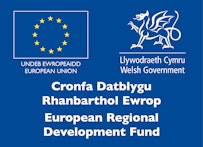Sustainable Energy
Sustainable Energy has developed an innovative energy network monitoring service to offer its clients as a result of a collaboration research and development project with the Data Innovation Accelerator (DIA).
The company was established in 1998 in Cardiff as a consultancy specialising in the assessment and development of low and zero carbon energy projects. Over the last twenty years, the company has grown and so has the size of its projects. Sustainable Energy now comprises a team of engineers, designers, project managers, specialist consultants and finance experts delivering low carbon, renewable energy and district energy network projects for a range of clients including local authorities, large commercial clients and third sector organisations. Now more than ever, the post-installation monitoring and management of these projects is critical to ensure that they are being used as effectively as possible and delivering the targeted carbon and financial savings.
Through their own business contacts, the company found out about the help they could receive from the Data Innovation Accelerator, a project being run by Cardiff University to support small and medium sized enterprises to explore and understand the benefits of data-driven innovation.
They had identified the potential value of data analysis to improve the energy network controls system being developed inhouse. When operating a large heat network, there is delay before any changes made to the heat supplied by the energy centre is felt at the buildings connected to the network. They wanted the ability to predict potential changes needed to the heat supplied by the energy centre so that, for example, if there was a cold snap forecasted, heat to the network could be increased in advance, in preparation for the predicted additional demand. They were using a heat demand model based on historical temperature data but needed a more sophisticated model that would also include environmental factors (such as rolling weather forecast data) to predict the energy demand (indicatively for the next 4 – 12 hours) using machine learning.
The team from the DIA developed a range of different energy model prediction simulations and identified which was the most accurate compared to actual data. This enabled the development of Sustainable Energy’s first prototype smart network control system, a system improved by the new heat and electricity demand and fuel consumption tool that forecasts a number of data points into the future for different building types, which is an outcome of the collaboration. The control system forms part of Sustainable Energy’s post-installation monitoring and management services for its clients. The test system has been developed further since the end of the collaboration with the DIA through data collection and analysis. It has been running for a year now and the company has been able to fine tune and optimise it inhouse. They are already discussing selling/licensing of the system to their clients so that they are able to monitor energy generation and consumption across the network and optimise network operation to maximize carbon and financial savings.
Sustainable Energy plans to develop the system further so that it will form part of the whole service offering to their clients from feasibility to installation and commissioning and effective post-installation monitoring and management. Through the improved services for clients, this offers the potential for meaningful impact on income and profits.
“We would not have been able to do this without employing an extra member of staff on a short-term contract and we would not have known the best approach to achieve our goals without the DIA” said the company’s director, Chrissy Woodman. “The support from the DIA team has helped us understand what we needed to do and how to use data more innovatively to improve our services to our clients.”
